Integrations
We’re built to serve the healthcare community, so we connect with your systems


Primary care physicians have a big job to do. But as systemic concerns – like healthcare models that incentivize sick care versus wellness – get sorted out, there is a clear way to alleviate the burden on these teams and adopt a well-rounded, ‘whole person’ care approach that substantially improves both care and outcomes. It’s with the right technology.
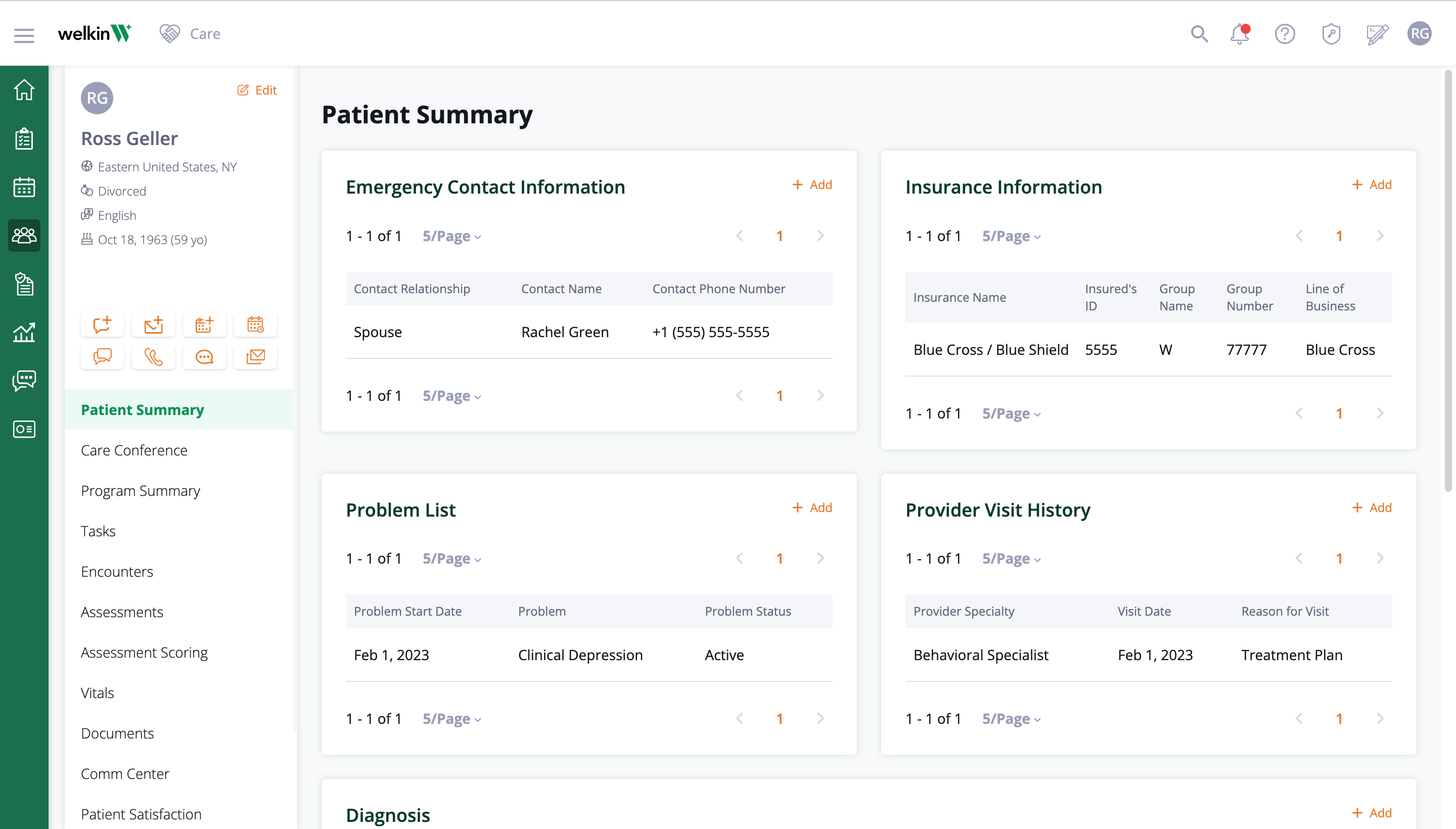
Perhaps a primary care doctor’s chief complaint – other than the burden of never-ending paperwork – is how many patients they need to see in a short time, for such a short time. Welkin can reduce administrative tasks with simplified data entry and note-taking. Each defined role in the system sees exactly what she needs to, so navigation is as simple as possible. Welkin surfaces the most important nuggets of what really matters, and reduces the noise so that providers don’t have to spend time looking for information. With time saved, clinicians can then reinvest some in patients, having more face to face time and strengthening the doctor/patient relationship through unhurried listening and personal focus.
Welkin ensures a team approach to care management is the norm. That means everyone uses one platform to keep up to speed, on the same page, and allocate tasks to those who are most appropriate to do them. It also means being able to pick up right where another team member left off. Practically, what’s nice about this model is that physicians are only called on to do what only they’re uniquely trained to do, like interpret tests, diagnose and prescribe. Others on the team can counsel, remind, set up new appointments, follow up on specialist appointments, set up check-ins, devise nutrition plans: reserving clinician time for when it has the greatest patient impact.
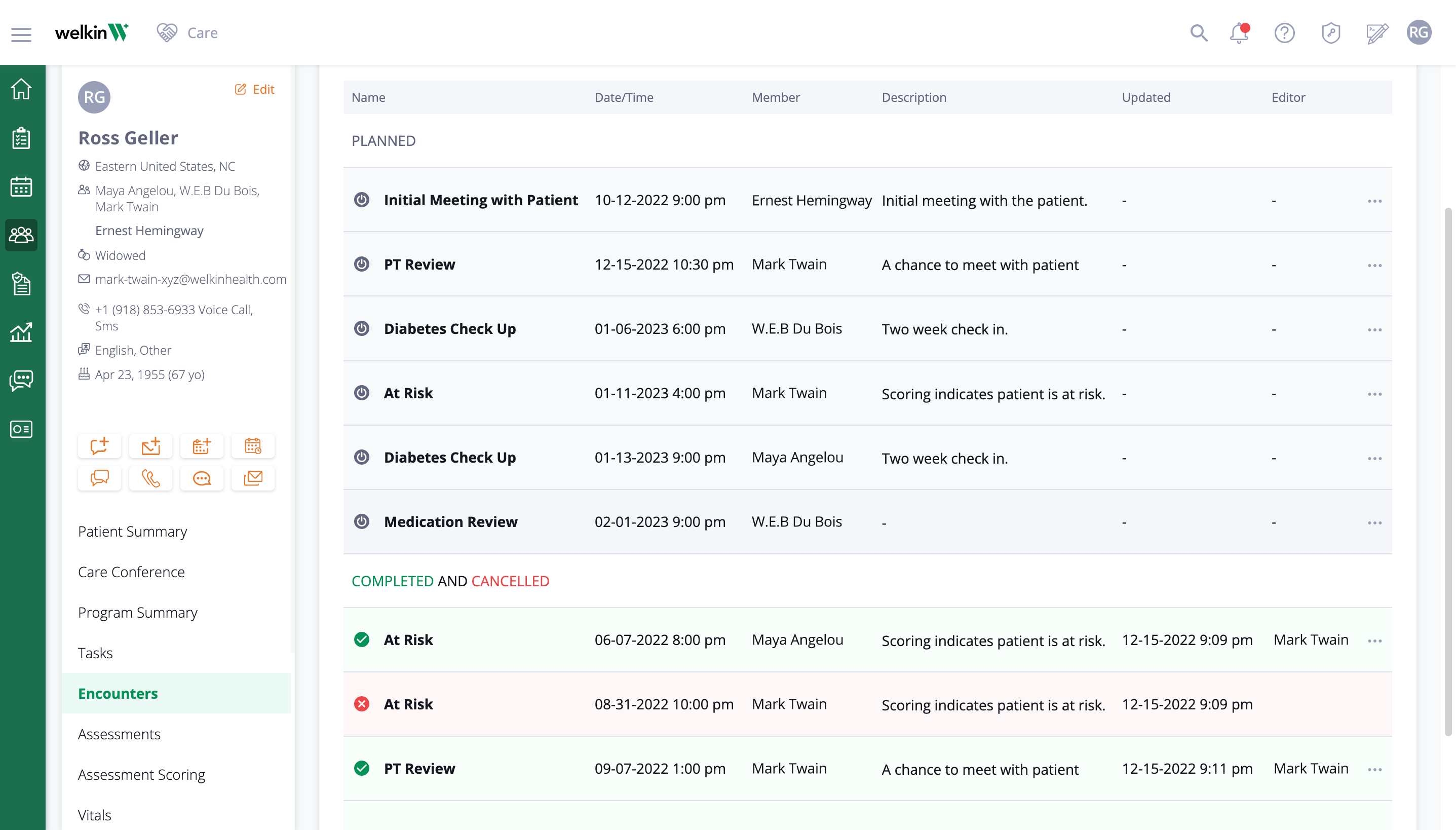
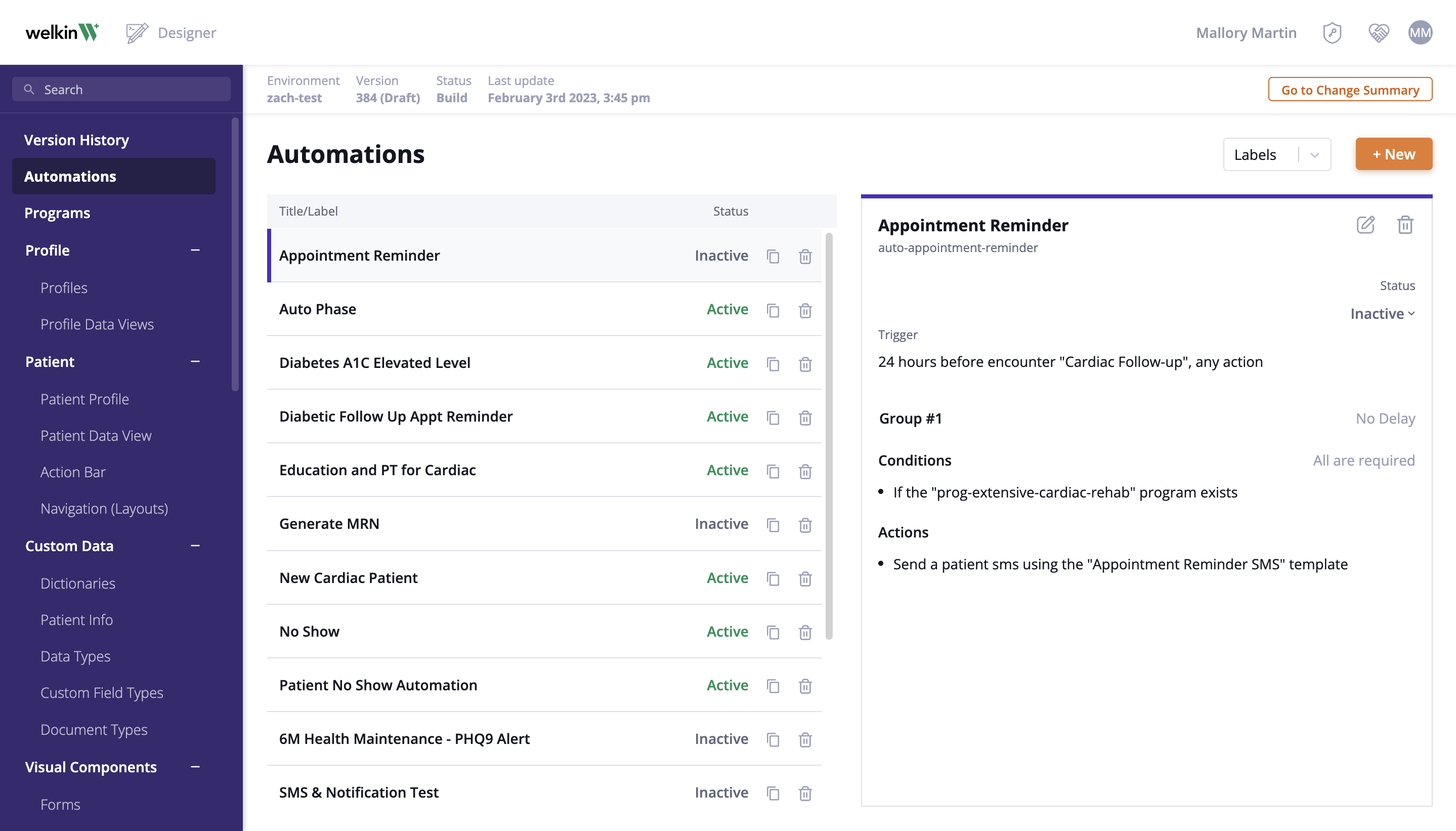
Primary care physicians today are responsible for a panel size of patients that is, on average, between 1,200 and 1,900. Thus, the patients with the loudest voices, or most urgent needs, often rise to the top of a primary care clinic’s list. Welkin’s platform enables care teams to keep in touch in a synchronous, asynchronous, and even automated fashion – with reminders, appointment scheduling, test results, and the like – can make lightweight communication much simpler to achieve on a regular and reassuring cadence. It can also make actually connecting for necessary personal conversations with patients substantially easier (and aligned with their preferences of text, email, phone call or video conference).
When primary care clinicians and their team members have such large panels of patients, the potential for dropping the ball gets higher, increasing the likelihood that patient outcomes will decline. The more technology can reliably connect the dots for the team, the less things fall through the cracks. Welkin unites all team members in a single view of the patient and can also be tailored to provide real-time alerts – based on the parameters unique to the clinician’s office and designed by the physician herself. Imagine, for example, being able to fine-tune your technology so that the instant certain test results come in, you can be alerted if the numbers are off. That automatically allows for faster evaluation and response times, which can only help improve patient outcomes.
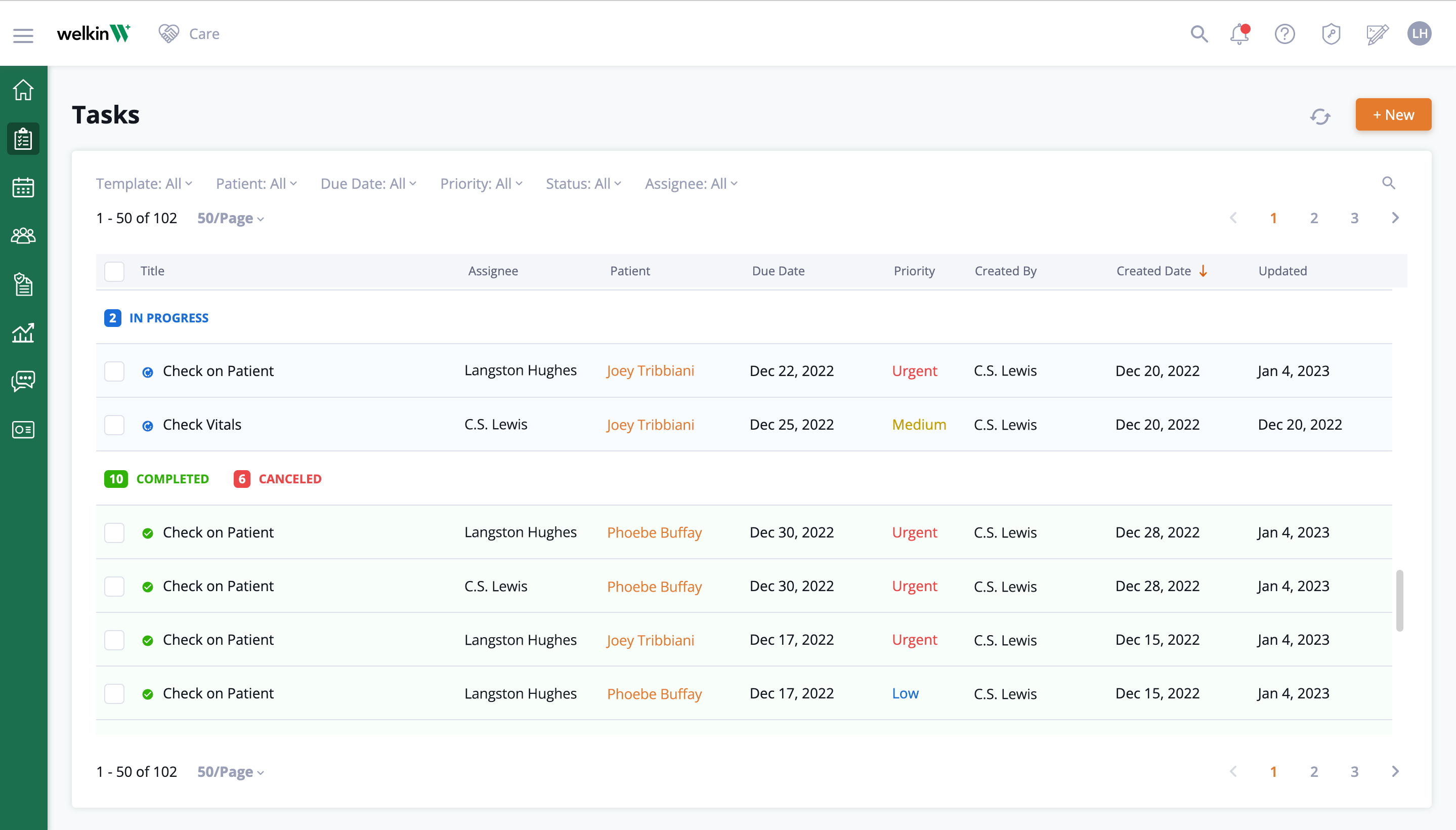
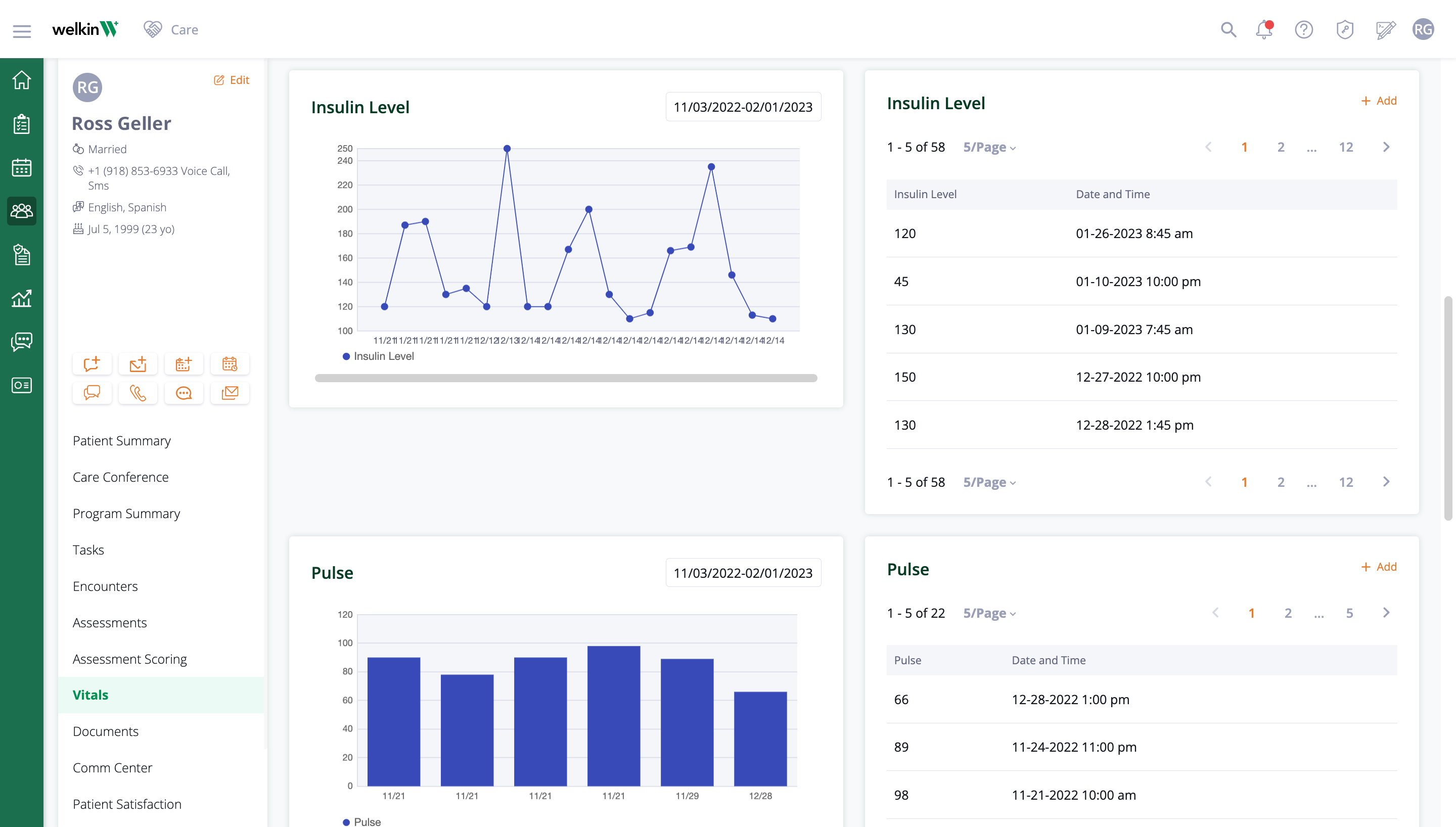
One time suck is the need to create and share notes with regularity and consistency foremost in mind. Welkin strikes the right balance of enough charting support to be comprehensive and organized can pull valuable double duty. It decreases the burden of charting for the clinician while also guiding information and workflow so it’s instantly understandable by every care team partner. And it can connect EHRs, care management, labs, electronic prescriptions and more, freeing up time from record-keeping and monitoring to spend with actual patients.
Welkin is designed to address care coordination. Assign the right team member to address patient needs at every step of the journey. We provide your team members with seamless transitions and a curated experience for every patient he or she serves.